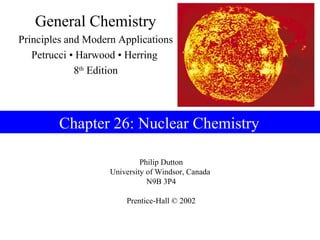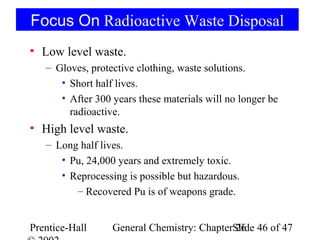This chapter of a general chemistry textbook covers nuclear chemistry, including:
1) Types of radioactive decay such as alpha decay, beta decay, and gamma ray emission.
2) Naturally occurring radioactive isotopes and their decay chains.
3) Nuclear reactions such as fission and fusion.
4) Applications of radioisotopes such as radiocarbon dating, medical imaging and treatment, tracers, and analytical techniques.
5) Topics on nuclear stability, fission vs fusion, nuclear reactors, radioactive waste disposal, and effects of radiation.














































